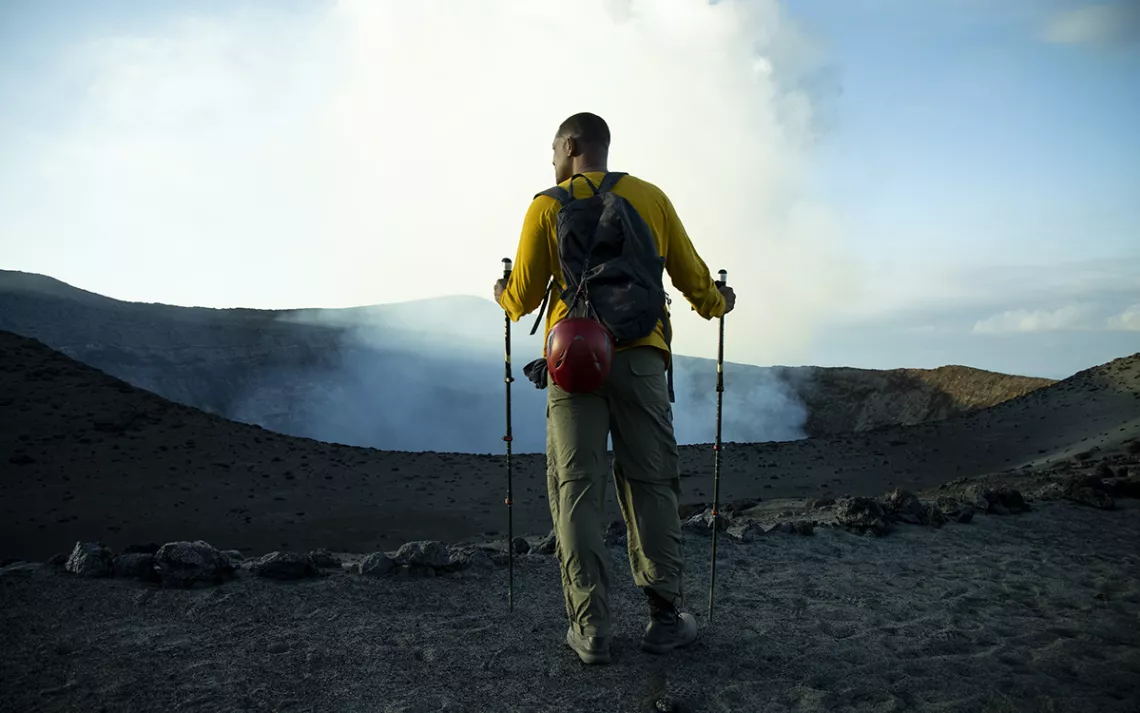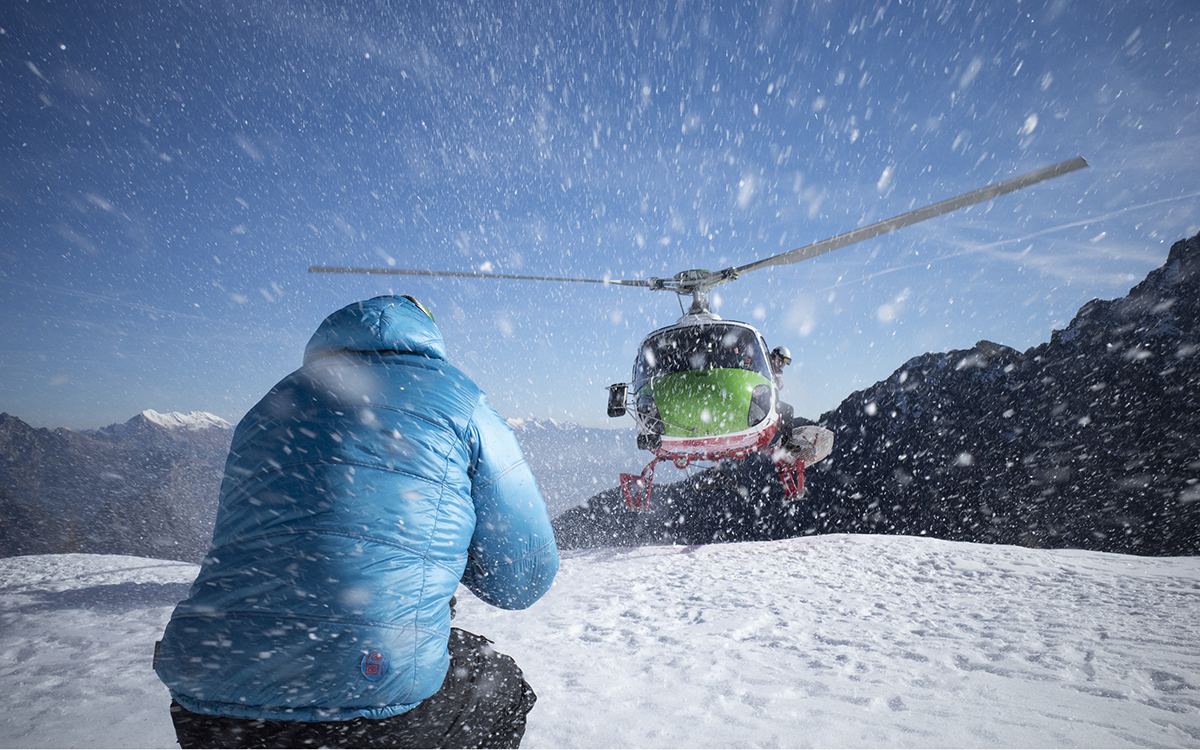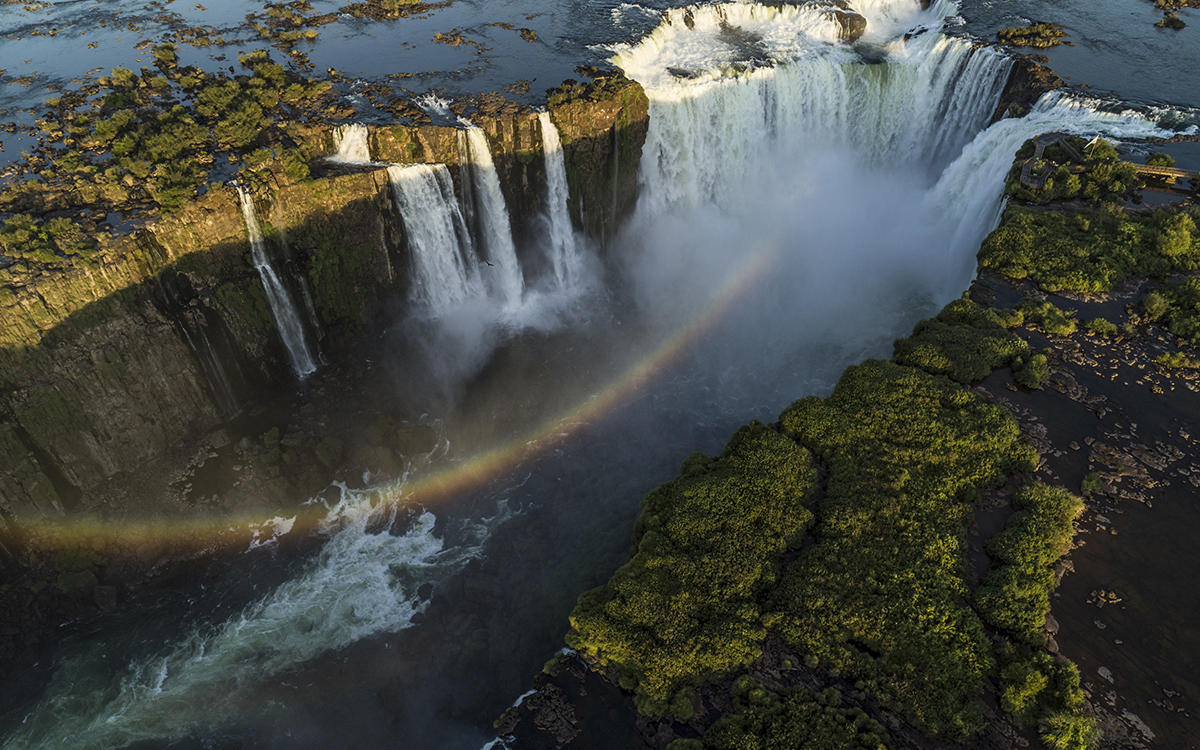In New Docuseries, Darren Aronofsky and Will Smith Take Viewers Beyond the Edge of the Earth
“Welcome to Earth” scratches the adventurer’s itch amidst pandemic sheltering

Photo courtesy of National Geographic for Disney+/Kyle Christy
Three and a half years ago, with Fresh Prince Will Smith's 50th birthday approaching, a few truths dawned on him. For all of Smith's Hollywood accolades, life’s outdoor pleasures remained a foreign exchange: Never before had he slept in a tent, hiked up a mountain, or swum in a lake.
It wasn’t until 2018, while recording narration for One Strange Rock, a docuseries about Earth’s place in the cosmos, that Smith decided to confront his long-standing fear of the great outdoors. When production wrapped, he was determined to step in front of the camera and at last experience the wilderness in person.
In Welcome to Earth, the newest National Geographic docuseries, filmmaker Darren Aronofsky whisks Will Smith and viewers across 34 countries and all seven continents. From rappelling across Vanuatu’s volcanoes and swimming alongside manta rays in the Maldives to exploring Romania’s caterpillars and Sweden’s black sand beaches, Smith and a team of wildlife explorers regularly transcend the boundary between science and fear. The cinema is stunning, best watched in a dark room and on a big screen. The series’ episodes, thematically grouped by sound, color, speed, and scent, elucidate the senses.
Originally intended as a smaller production, the full Disney+ series condenses 92 individual shoots into six 40-minute episodes. From the onset of filming, nature’s unpredictability provided some close calls. As Smith and crew were descending into one of the first expeditions in the Serengeti, a giant bull elephant ambled onto a landing strip, inciting a frantic yet safely adjusted plane landing; later, they crossed paths with a pack of lions in the middle of the night.

High in the Italian Dolomites. | Photo courtesy of National Geographic for Disney+/Nat Sharman

Aerial view of a rainbow over Iguacu Falls. | Photo courtesy of National Geographic for Disney+/Freddie Claire
According to executive producer Jane Root, Smith cleared his schedule immediately after the trip to commit long term to stepping out of his comfort zone. “He doubled the amount of time he was doing and was totally game for anything,” she told Sierra. “He’s not afraid to be frightened.”
Behind the scenes, there were plenty of reasons to be: an unexpected volcanic eruption while filming in Vanuatu; an eight-foot crocodile disrupting a film crew’s home base in Namibia; a producer being tailed by a shark near the Great Barrier Reef, his foot unknowingly cut and leaving a faint trail of blood in the water. The pandemic hit midway through filming. Ultimately, a cautious workaround led to even greater revelations.
“The more isolated the places were, the safer we were as a team,” Root says. “It pushed us to do much more extreme and surprising locations. We ended up going to places that we might never have gone to, some of the most startling scenes in the series.”
That includes Smith submerging 1,000 feet below sea level in the Bahamas and meeting olms—blind, entirely aquatic cave salamanders—beneath the Karst plateau in Slovenia.
In the series finale, Smith traverses Iceland’s Vatnajökull Glacier and kayaks down a raging whitewater river. Filming took place at the end of summer 2020, before COVID-19 vaccines were available. Running low on COVID tests yet well-stocked with chemists and other scientists who joined the crew to give environmental guidance, the team created a makeshift testing laboratory in their Reykjavik hotel’s basement. They donated the lab to the Icelandic government, Root says, and it is still in use today.
But for all the wholesome anecdotes and spectacular imagery, the series does have some misgivings. Climate-conscious viewers will point to the inevitable, detrimental impact of world travel, especially when transporting copious amounts of film equipment and large crews. Others might roll their eyes at the ease of globe-trekking when money and organizational support is in relatively unlimited supply; whether fair or not, fear-facing, when done luxuriously and presented cinematically, is sure to evoke less empathy from viewers.
The series does deliver on its ultimate promise, which is to help “people appreciate the incredible power of the world and the variety of this place we live in,” Root says. Smith and the explorers who guide him are authentically joyous, and their sincere appreciation for each animal, plant, and landscape they encounter make them easy to live vicariously through. In the age of the climate crisis, the series does well to remind us why this world is worth saving.
“We live in times which feel grim,” Root says. “This is a moment of pleasure in the middle of all that. You just have to marvel.”
 The Magazine of The Sierra Club
The Magazine of The Sierra Club







